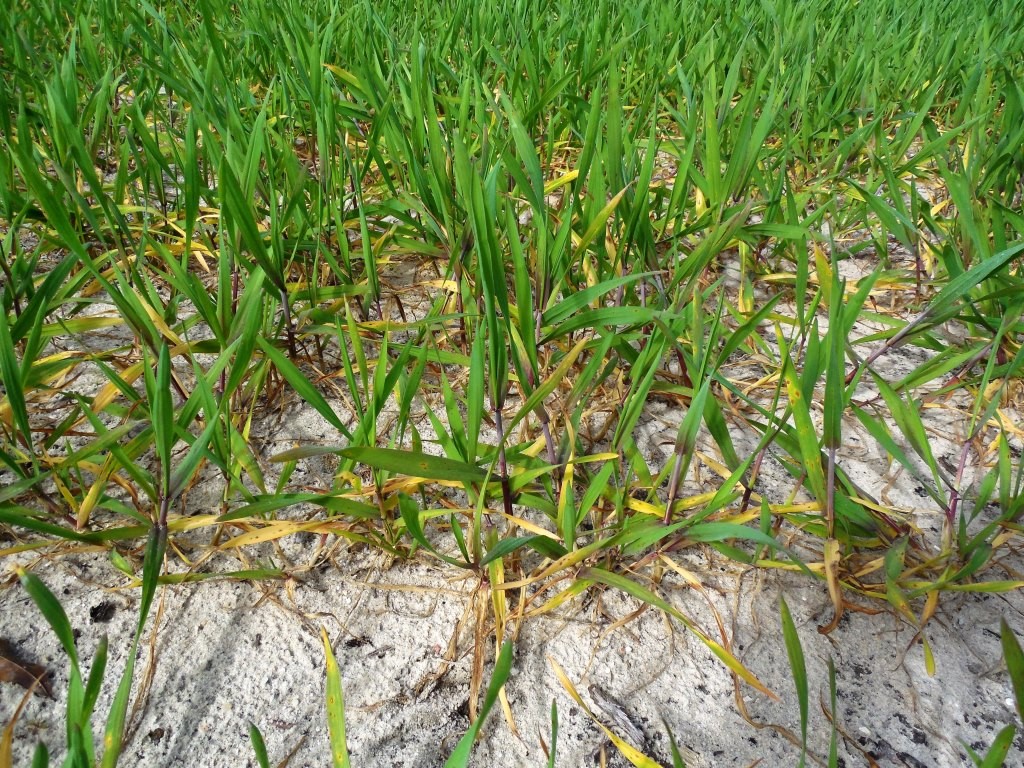
Figure 1. Nitrogen deficient triticale forage. Notice older leaves are yellow and stems have a purple cast.
Recent rains have been, in many areas of the Panhandle, “too much of a good thing.” Too much rain can limit farm equipment access to fields, delay scheduled planting, and other management activities, and wash away valuable fertilizer applications. Nitrogen in particular is mobile and volatile in water logged soils. Given the challenges of excessive water, are there ways we can determine, after significant rain events, if soil nitrogen (N) has leached beyond our crop’s root zone?
Fortunately, plants with deep roots can capture soil nitrogen as it leaches (or travels) past surface roots, but you still need a reasonable estimate of how deep those roots are. For example, a well-managed, adequately fertilized, perennial grass pasture, such as Bahiagrass, can have roots exceeding five feet deep. Poorly managed, heavily grazed, or annual grass pastures, however, will have shallow root systems, and are not capable of capturing soil nitrogen, as it quickly leaches past the shallow roots during heavy rain events.
- The following are a few considerations that you can use to estimate the depth to which nitrogen (N) fertilizer might travel following a rain event.
- First, most of our plant-available soil N is typically in the nitrate form, and nitrate readily moves through the soil with water. Organic, urea, or ammonia N does not readily move through the soil with water, and it takes soil microbes (bacteria) a couple of weeks to convert these forms of N into the plant-available nitrate form.
- Second, north Florida soils generally have a water infiltration rate of approximately 1 inch per hour. So, if it rained more than 1 inch per hour, we will likely experience temporary run-off or ponding based upon a soil infiltration rate of 1 inch per hour. Nitrogen can be lost during ponding situations due to de-nitrification (volatilization into the atmosphere.)
- Third, north Florida’s surface soils can hold approximately 0.6 to 1.2 inches of water per foot of soil at field capacity (FC = the amount of water held after free drainage, i.e., no longer dripping wet).
So, what are some management actions you can take using these considerations?
- Do not fertilize saturated soils. After more than 6 inches of rainfall over a day or two, you may have lost most of your plant available nitrate-N fertilizer, especially if it was applied more than two weeks prior (anhydrous more than 4 weeks prior) to the rain event. Remember that it is the nitrate form that moves with the water and it takes soil microbes a couple of weeks to convert ammonia or urea N to the nitrate form.
- You might consider reapplying up to half your N fertilizer if it rained from 3 to 6 inches over a day or two, or if you have field ponding lasting 3 days or more.
- Nitrogen replacement is probably not necessary if the rain event was less than 3 inches over a day or two, if the fertilizer was applied within a week of the rain event (anhydrous less than 3 weeks), or if field ponding lasted less than 3 days.
- If you have shallow-rooted, heavily grazed plants, however, even smaller (2 to 3 inch) reoccurring rain events can leach nitrogen below your root zone. In these crops, if lower (older) leaves are turning yellow or fading, while younger leaves remain green, your crops may be experiencing nitrogen deficiencies (figure 1).
Source:ufl.edu